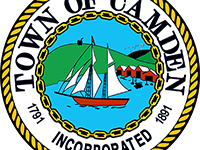Improving Our Access To Healthcare
There are increasing reports on the difficulty of obtaining timely healthcare. And the situation is only going to get worse, not better. The Association of American Medical Colleges predicts that the shortage of physicians may exceed 100,000 by 2032, reflecting significant shortages in primary care as well as specialty physicians. The major factor driving the demand for more physicians is the aging of Baby Boomers, impacted by the dwindling supply of physicians, one-third of whom will be older than 65 in the next decade.
Although these shortages are expected to be felt everywhere, they will be more acutely felt in rural areas like Maine where resources are scarce and the ability to recruit specialists is challenging. At the same time, Maine has the largest percentage of residents age 65 or older (20.6%) of any State in the nation. And we know that as people age, their need for health services increases.
That’s why “telehealth” is so important. Experts observe that telehealth holds tremendous potential for helping seniors maintain their independence and enjoy living at home longer. It offers a range of options to make healthcare easier and more accessible, particularly in remote areas like Maine subject to less than ideal weather and transportation conditions. What exactly is telehealth and how does it work?
One example of telehealth, sometimes referred to as telemedicine, is the real-time (live) interaction between a patient and a doctor. When using this video feature, a patient is able to speak with a doctor just like in a normal office visit. It can be used to diagnose illnesses, address patient concerns, or help manage a long-term issue. Healthcare teams may also use these interactions to communicate with each other. Unfortunately, this type of interaction requires sufficient download and upload internet speed (broadband). As we have discussed in prior articles, the most effective way to secure this new service is through fiber optic to every home and business.
Additional forms of telehealth range from tracking vital signs with remote monitoring devices, communicating easily with a nurse through a video chat or internet messaging, to receiving immediate care when you have an urgent situation and need to determine whether to summon emergency assistance. In fact, the ability to obtain this urgent assistance through the internet can avoid the expense of unnecessary 911 calls and first responder visits.
In addition to helping seniors remain self-sufficient and safe, telehealth can be used to help families and post-operative patients. For example, new moms can interact with their doctors without having to find care for their other children so they can come into the office. Post-surgical patients can consult with their doctor, show them wounds or scars, without having to leave their homes. Telehealth is key for better care of patients with chronic illnesses, enabling patients to record critical health information without the need for a formal appointment. And telehealth helps to keep us all healthier by not having to expose ill people to those with compromised immune systems, dangerous germs that can exist in public places like doctors’ offices, clinics or the hospital.
Experts claim that “telehealth and remote patient monitoring will become an essential cost effective and reliable means to expand capacity in a health care system marked with significant and persistent specialty shortages and geographic disparities.”
One of the primary hurdles preventing us from achieving this now isn’t the lack of technology, systems or workforce on the healthcare side. It’s the lack of technology and bandwidth (translation: speed) on the patient side. Broadband internet service can get us there – bringing telehealth to the Midcoast of Maine, making our lives easier and our health care cheaper.
Event Date
Address
United States






















